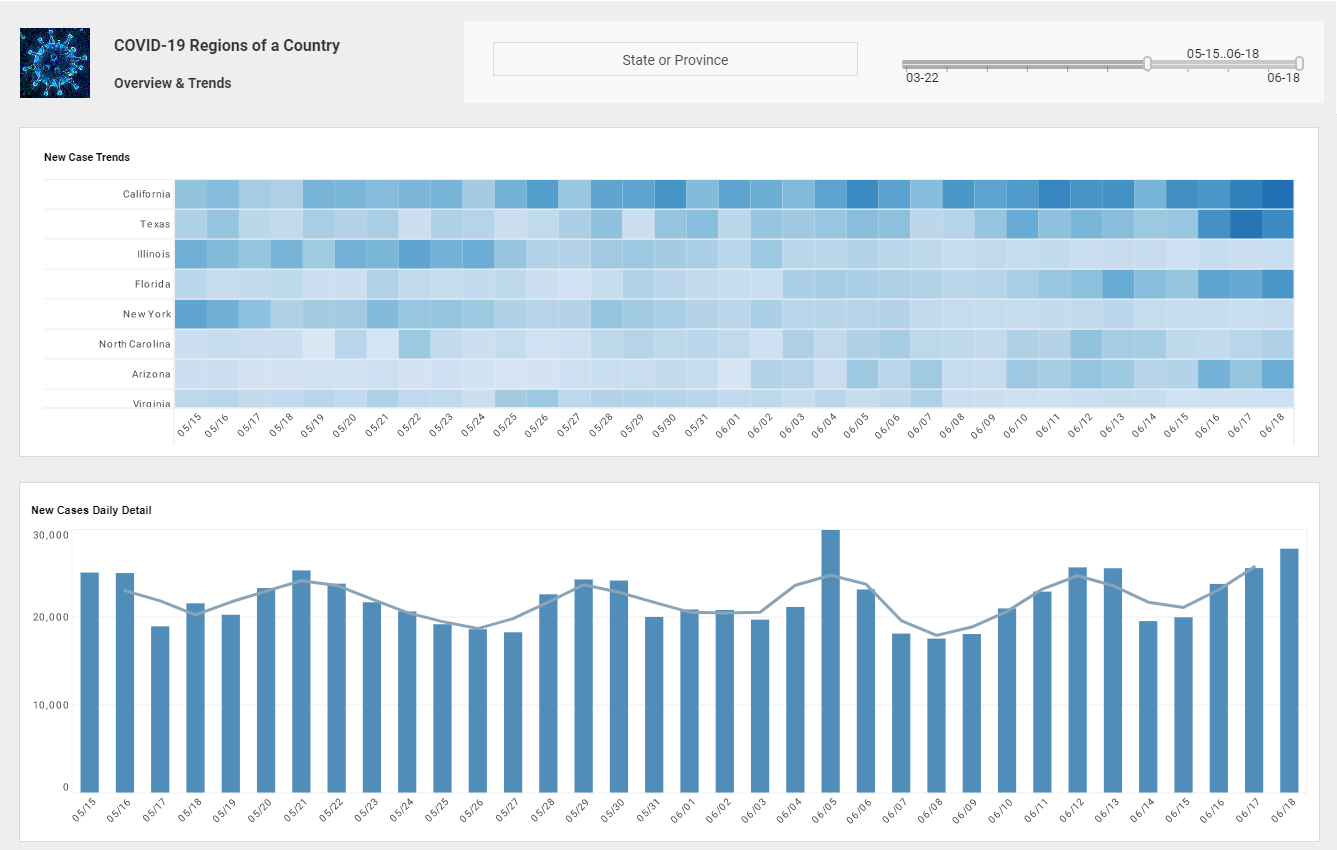How Operational Business Intelligence Differs from Traditional Business Intelligence
On the surface, operational business intelligence looks like a simple expansion of business intelligence into operational areas of an organization. In reality, it requires a whole new way of thinking in data modeling, report design and implementation, based on its real-time collaborative nature.
This article details the differences between traditional business intelligence and operational intelligence platforms from an enterprise reporting perspective:
• Understand why many traditional BI implementations fail
• Understand the conflicting reporting requirements between business intelligence and operational
business intelligence
• Understand the operational BI challenges in managing strategic and tactical data
• Learn how operational BI reporting based solutions provide flexibility, scalability and platform
independence to ensure solution success
| #1 Ranking: Read how InetSoft was rated #1 for user adoption in G2's user survey-based index | Read More |
Operational BI: Why BI + Reporting Does Not Equal Reporting + BI
Operational business intelligence is a rapidly developing area of business intelligence (BI). From the surface, it looks like a simple expansion of business intelligence capabilities to operational areas. In practice, a successful operational BI implementation requires completely new thinking in data modeling, report design and program implementation based on its real-time collaborative nature.
Reporting and BI: the Convergence
Traditionally, business intelligence software focuses on corporate departments that serve strategic functions. Because of this target user population, business intelligence emphasizes dynamic analytics such as ad hoc queries, OLAP analysis and other slice-and-dice functions. These departments also evaluate large volumes of historical data. As a consequence, business intelligence software is associated with data warehouses, data marts and other centralized, large scale, aggregated data stores.
For operational users, reporting software, either home grown or commercial packages, is the primary, and many times the only, business intelligence mechanism. Most of the common production reports are pre-designed for end users. Additional report requests are handled by IT on an as needed basis.
As opposed to business intelligence software, commercial reporting software is generally aimed at the IT staff that creates pre-designed business reports. As a consequence, operational users are severely limited in their ability to dynamically access information. Even tasks as mundane as changing a font or enlarging a field will require IT involvement. This process is typically inflexible, costly to maintain and impedes business innovation.
Most operational users have self-service information needs. The answer seems straightforward: give business intelligence tools to operational users. However, implementing a traditional business intelligence solution for operational users turns out to be quite troublesome. Studies by Business Week, Information Week, TDWI and others, all indicate that user adoption; ease-of-use and other user related issues are highly unsatisfactory. Essentially, operational users cannot reap all of the benefits that BI is supposed to bring.
 |
Read how InetSoft saves money and resources with deployment flexibility. |
Traditional BI in Operations: Strategic Tools, Tactical Tasks
Traditional BI tools’ strategic focus is its strength, but it is also the obstacle for success in an operational environment.
The distinction between strategic and tactical is an important concept for any sizable organization. To illustrate the point, consider the military. A general will not try to use a ballistic missile (a strategic tool) to sink a moving ship at sea (a tactical task). A smaller, more mobile anti-ship missile must be employed. It doesn’t need to destroy a city, but it must be able to maneuver as needed to hit the moving target.
The “strategic tool for a tactical task” problem is caused by the mismatch of user and technical models of traditional BI, with those of operational departments. The traditional BI user model assumes that a trained analyst population, which deals with a well-defined set of business data such as revenue and profit, is the primary user. Operations not only have a very diverse user population but also need to change focus quickly and frequently.
In the traditional BI technical model, experienced IT staff (sometimes dedicated BI specialists) implement and manage a high performance, but complex, BI platform. In operational departments, the staff (including IT) is domain knowledgeable, but knows very little about implementing traditional BI.
The historical reality is that when traditional business intelligence tools started to recognize these issues, they began to add reporting capabilities. This approach partially addresses the user model mismatch but the fundamental architectural mismatch yet remains.
 |
Learn about the top 10 features of embedded business intelligence. |
Winning Operational BI Strategy: Grow from Enterprise Reporting
Enterprise reporting-based operational BI is really Reporting + BI, instead of BI + Reporting. The significant difference between the traditional approach and operational approach is that enterprise reporting has an operational focus from the beginning.
The user model for enterprise reporting is also clearly operationally focused. Well-crafted production reports codify best practices and achieve business process repeatability. A gentle learning curve allows business users to gradually grow into interactive reports, as well as ad hoc reports. Report driven analytics, dashboards and alerts allow managers to effectively address their monitoring needs.
The bottom line here is that typical enterprise reporting “technical” models are dissimilar to the traditional monolithic BI platforms. It is more closely integrated with business applications and processes. In many instances, these reporting systems are embedded seamlessly into enterprise business applications, to become an integral part of the business process itself.
